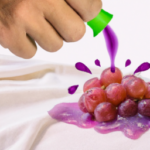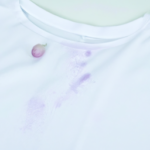Juice Tips and Tricks
How To Get Pomegranate Juice Out Of Clothes

I love pomegranate juice, but I hate how it always stains my clothes with its deep red color when it spills. These stains can be difficult to get rid of, especially once they have dried. Thankfully, I have learned some tricks for removing pomegranate juice stains from fabric, and I am excited to share these tips with you.
The first step is to identify the stain type and fabric type. Is the fabric synthetic or natural? Is it delicate or sturdy? Is the stain fresh or old? These factors will determine the best approach to remove the stain without damaging the fabric.
Once you know what you’re dealing with, you can follow the steps I’ll outline in this article to effectively remove the stain and restore your clothes to their former glory.
Key Takeaways
- Blot the stain with a clean cloth immediately and rinse with cold water to remove excess juice.
- Soak the stained fabric in water and detergent for several hours, agitating every 30 minutes.
- Wash the fabric with cold water, vinegar, and baking soda, and avoid hot water, bleach, and fabric softener.
- Air dry the fabric and use low heat when ironing, and take preventative measures when eating fruits likely to stain clothes.
Identify the Stain Type and Fabric Type
Alright, let’s figure out what kind of stubborn pomegranate stain we’re dealing with and what fabric it’s on.
The first step in getting rid of any stain is to identify the fabric type and the type of stain. Different fabrics require different treatments, and certain stains require specific stain removal solutions.
When it comes to identifying fabric types, you need to look at the care label on your clothing. The label should tell you the type of fabric and provide specific washing instructions. Knowing your fabric type will help you determine the best course of action for removing the stain without damaging the fabric.
As for understanding stain removal solutions, you need to know that pomegranate juice is a tough stain to remove. It’s important to act quickly and use the right solution for your fabric type to prevent the stain from setting in.
Now that we’ve identified the fabric type and the type of stain, it’s time to move on to the next step – blotting the stain with a clean cloth.
Blot the Stain with a Clean Cloth
As I gently dab at the vibrant red mark on my garment with a soft cloth, I begin to realize the importance of preventing stains and taking care of the little marks in my life before they become bigger problems.
One way to prevent fruit juice stains is by wearing an apron or old clothing while preparing or eating fruits like pomegranates. However, in case of any stains, it’s important to act fast and blot the stain with a clean cloth immediately.
It’s also important to note that different fruit juice stains may require different approaches for removal. For example, while pomegranate juice stains can be removed by blotting, removing other fruit juice stains may require the use of a specific stain remover. Therefore, it’s important to identify the type of stain and fabric type before attempting any removal methods.
With that said, the next step after blotting the pomegranate juice stain is to rinse the stain with cold water.
Rinse the Stain with Cold Water
After gently blotting the red mark on my favorite shirt, I rush to the sink and rinse the stain with cold water, hoping to save my beloved garment from permanent damage.
I know that preventing stains is always better than removing them and that’s why I always try to be extra careful while eating or drinking anything that can potentially leave a mark. However, accidents happen, and that’s why it’s important to know the right way to deal with them.
Rinsing the stain with cold water helps to remove any excess pomegranate juice from the fabric. This step is crucial as it prevents the stain from setting in and becoming permanent.
After rinsing the stain, I check to see if it has completely disappeared. If not, I don’t panic and instead proceed to soak the stain in a mixture of water and the right detergent, as recommended by the manufacturer.
Soak the Stain
To properly tackle the pomegranate stain, you’ll need to fill a bowl with cold water and a generous amount of detergent.
As you soak the stained fabric, take a deep breath and remind yourself that this is just a minor setback.
Here are a few things to keep in mind during this step:
- Be patient: Depending on the severity of the stain, you may need to soak the fabric for several hours or even overnight. Don’t rush the process or you risk setting the stain even further.
- Agitate the water: Every 30 minutes or so, give the fabric a gentle stir or swish to help loosen the stain from the fibers.
- Prevent future stains: While the fabric is soaking, take a minute to consider how you can avoid similar stains in the future. Perhaps you’ll decide to wear an apron while cooking, or maybe you’ll take extra care to avoid eating messy foods near your clothing.
Once you’ve let the fabric soak for the appropriate timeframe, it’s time to move on to the next step: washing the fabric.
Wash the Fabric
Now it’s time to throw the soaked fabric into the washing machine with a cup of vinegar and a scoop of baking soda to ensure that the stain is completely removed and future stains are prevented. Vinegar helps to break down the pomegranate juice stain while baking soda helps to absorb any remaining residue.
It’s important to use cold water since hot water can set the stain into the fabric permanently. To prevent staining accidents in the future, it’s important to be cautious when consuming pomegranate juice and to immediately address any spills or splatters.
It’s also important to follow fabric care tips, such as reading the label instructions before washing and avoiding using bleach or fabric softener on stained clothing. With these precautions and proper care, your clothes can remain stain-free and in good condition for longer.
As you take the fabric out of the washing machine, it’s important to check the stain to ensure that it has been completely removed before drying.
Check the Stain
Before tossing the fabric in the dryer, it’s important to make sure the stain is completely gone, so you don’t end up crying over spilled milk.
Pomegranate stains can be stubborn and difficult to remove, especially if they are allowed to set in. Common causes of pomegranate stains on clothes include eating the fruit, spilling juice, or accidentally rubbing against a pomegranate tree.
To prevent pomegranate stains on clothes, always wear an apron or protective clothing when handling the fruit. Additionally, try to eat pomegranates over a plate or bowl to catch any stray juice.
When it comes to removing pomegranate stains from clothes, the right laundry detergent can make all the difference. Look for a detergent that is specifically designed to remove fruit stains from fabrics. Some of the best laundry detergents for removing fruit stains from fabrics include OxiClean, Tide, and Persil. These detergents are formulated to break down the pigments in pomegranate juice and lift them from the fabric.
To treat lingering stains, try using a stain remover or soaking the fabric in a mixture of vinegar and water before washing. With a little bit of patience and persistence, you can get rid of even the most stubborn pomegranate stains from your clothes.
Treat Lingering Stains
When dealing with lingering stains on clothes, I’ve found that using vinegar or lemon juice can be effective. Simply mix equal parts of either ingredient with water and soak the stained area for a few hours before washing as usual.
Another solution is to use hydrogen peroxide, which can be applied directly to the stain and left for a few minutes before washing. These methods have worked for me in the past and have saved many clothes from being ruined by stubborn stains.
Use Vinegar or Lemon Juice
Using vinegar or lemon juice is an effective way to get pomegranate juice stains out of clothes. If you’re someone who drinks pomegranate juice often, you know how easily it can leave behind a stain. But, don’t worry, using vinegar or lemon juice can help you get rid of those pesky stains.
Vinegar is a versatile ingredient that can be used in different ways at home. It’s not only great for cooking, but it’s also an effective cleaning agent. The acidic nature of vinegar makes it an excellent stain remover. To use vinegar or lemon juice to remove pomegranate juice stains from clothes, simply pour some vinegar or lemon juice onto the affected area. Let it sit for a few minutes before rinsing it off with cold water. You can also add some baking soda to the vinegar or lemon juice for a more effective stain removal.
After rinsing the stain, you can wash the clothes as usual. If vinegar or lemon juice doesn’t work, don’t worry, there are other ways to get rid of pomegranate juice stains. One effective method is to use hydrogen peroxide. But, we’ll talk about that in the next section.
Use Hydrogen Peroxide
I’ve tried using vinegar and lemon juice to remove pomegranate juice stains from my clothes, but sometimes those methods just don’t cut it. That’s when I turn to an alternative method: hydrogen peroxide.
Here are the steps I follow when using hydrogen peroxide to remove pomegranate juice stains:
- First, I pour a small amount of hydrogen peroxide directly onto the stain.
- Then, I use a clean cloth or sponge to gently blot the stain, being careful not to spread it around.
- After blotting, I let the hydrogen peroxide sit on the stain for a few minutes.
- Finally, I rinse the fabric with cool water and wash it as usual.
It’s important to note that hydrogen peroxide can be harsh on some fabrics, so it’s important to do a spot test first and to use caution when using this method. Safety precautions should always be taken when handling any cleaning solutions.
Now that we’ve tackled the issue of removing the pomegranate juice stain, the next step is to air dry the fabric to prevent any further damage.
Air Dry the Fabric
Now, just hang up the clothes and let them dry naturally in the air. Air drying is a great way to get pomegranate juice out of clothes without causing any further damage to the fabric. Not only is it a cost-effective method, but it also has many benefits for your clothes.
Air drying can help prevent fabric shrinkage, which is a common problem when using a dryer. It also helps to preserve the fabric’s color and texture, making your clothes last longer. To prevent shrinkage, make sure to reshape the clothes while they are still damp and avoid hanging them in direct sunlight or heat. With these tips, air drying can become a regular part of your laundry routine.
As the clothes dry, you may notice that there is still a visible stain from the pomegranate juice. In the next section, I will explain how to iron the fabric to remove any remaining stains.
Iron the Fabric
When ironing the fabric to remove pomegranate juice stains, it’s important to use a low heat setting. This will prevent any further damage to the fabric and ensure that the stain is removed effectively.
Additionally, it’s recommended to use a pressing cloth to protect the fabric from direct heat and prevent any potential scorching.
Use a Low Heat Setting
Start by setting your dryer to a low heat setting to avoid setting the pomegranate juice stain into the fabric. This is especially important if you’ve already ironed the stained area, as heat can set the stain further into the fabric. If you don’t have a low heat setting on your dryer, consider air-drying the garment instead.
When using a low heat setting, it’s important to be patient. It may take longer for the garment to dry, but it’s worth it to avoid damaging the fabric. Once the garment is dry, check to see if the stain is still visible. If it is, repeat the previous steps of applying detergent and washing the garment.
To further protect the fabric, use a pressing cloth in the next step. This will prevent any further damage to the fabric while you work on removing the stain.
Use a Pressing Cloth
Using a pressing cloth is like putting a shield over your garment while removing the stubborn stain, allowing you to clean without causing any further harm to the fabric. The benefits of using a pressing cloth are plentiful.
First and foremost, it protects your clothing from the high heat of the iron. Secondly, it provides a barrier between the iron and the stain, preventing the stain from spreading or setting in further. Thirdly, it helps to evenly distribute the heat, ensuring that the fabric is not damaged or scorched.
There are different types of pressing cloths to use, depending on the fabric and the type of stain. A muslin cloth is a common choice, as it is lightweight and allows for easy steam penetration. A terry cloth is a good option for heavier fabrics, as it can absorb excess moisture and provide extra cushioning. Silk organza is another option, and is especially useful for delicate fabrics such as silk or satin.
Regardless of the type of pressing cloth used, be sure to choose one that’s clean and free of any stains or debris.
Transitioning into the subsequent section about ‘repeat the process if needed’, it’s important to note that sometimes one application of the pressing cloth may not be enough to completely remove the pomegranate juice stain. In that case, don’t be discouraged – simply repeat the process until the stain’s gone to your satisfaction.
Repeat the Process if Needed
If the stain isn’t fully removed, don’t give up yet – give it another go! Sometimes, pomegranate juice stains can be stubborn and require multiple attempts to remove entirely. But don’t worry; with a few simple steps, your clothes can look as good as new.
To repeat the process:
- Saturate the stained area with cold water.
- Apply a stain remover or laundry detergent directly to the stain and let it sit for a few minutes.
- Gently rub the fabric together to work the solution into the fibers.
- Rinse the garment thoroughly with cold water and inspect the stain.
- If it’s still visible, repeat the process until the stain is gone.
Remember to always test the stain remover on a small, inconspicuous area of the garment before applying it to the stain. By following these steps and having a bit of patience, you’ll be able to remove even the toughest pomegranate juice stains from your clothes.
And as a bonus tip, remember to take preventative measures when eating fruits that are likely to stain clothes, such as wearing an apron or bib, and removing any spills immediately to avoid further damage.
Frequently Asked Questions
Can I use warm or hot water instead of cold water to rinse the stain?
I recommend using warm water for stain removal. However, before rinsing, I would pre-treat the stain with a mixture of vinegar and baking soda for optimal results. This method has proven effective in removing tough stains.
What type of soap or detergent should I use to wash the fabric?
When it comes to washing fabric, I always use the best fabric detergents. For tough stains like pomegranate juice, pre treating methods are crucial. Look for a detergent with enzymes to break down the stain and follow the instructions carefully for best results.
Will the pomegranate stain come out completely or will there still be some discoloration?
I’ve found that removing pomegranate stains from clothing can be tricky, but with proper treatment, it’s possible for the stain to come out completely. Preventing future stains involves quick action and using stain-removing products designed for different types of fabrics.
Can I use a dryer to dry the fabric instead of air drying it?
I wouldn’t recommend using a dryer to dry stained fabric as the heat can set the stain. It’s best to air dry first, then treat the stain with a stain remover before washing. Proper fabric care is important to remove stains effectively.
Will the ironing process damage the fabric or leave any marks on it?
Ironing safety is crucial to avoid damaging the fabric or leaving marks. There are alternative stain removal methods to consider, such as using vinegar or lemon juice. Always test a small area first and follow care instructions.
Conclusion
Well, that was a messy situation, but don’t worry, I’ve got you covered on how to get pomegranate juice out of clothes.
First things first, identify the stain type and fabric type to ensure you use the right method. Blot the stain with a clean cloth to remove excess juice, then rinse with cold water.
Soak the stain in a mixture of water and laundry detergent for 30 minutes before washing the fabric in the washing machine. If there are still lingering stains, treat them with a stain remover or white vinegar before air drying the fabric.
Once dry, iron the fabric to ensure a smooth finish. And if the stain is still there, don’t give up! Repeat the process as many times as needed until the stain is completely removed.
Remember, accidents happen and it’s important to stay calm and tackle the problem head-on. As the saying goes, "where there’s a will, there’s a way."And with these steps, you’ll have that pomegranate juice stain out in no time.
Happy cleaning!
Cindy thoroughly researches juicing trends, techniques, and recipes to provide readers with practical advice and inspiration. Her writing style is accessible, engaging, and designed to make complex concepts easy to understand. Cindy’s dedication to promoting the advantages of juicing shines through her work, empowering readers to make positive changes in their lives through the simple act of juicing.
Juice Tips and Tricks
How to Make Aloe Vera Juice Taste Better

Tired of the strong flavor of aloe vera juice? No problem, we’ve got the answer for you.
In this article, we’ll share some tips and tricks to make your aloe vera juice taste better. We have tried and tested various methods to enhance the flavor without compromising the health benefits.
From choosing the right juice to adding natural sweeteners and infusing with fruits and herbs, we’ve got all the information you need to transform your aloe vera juice into a delightful and refreshing beverage.
Let’s dive in!
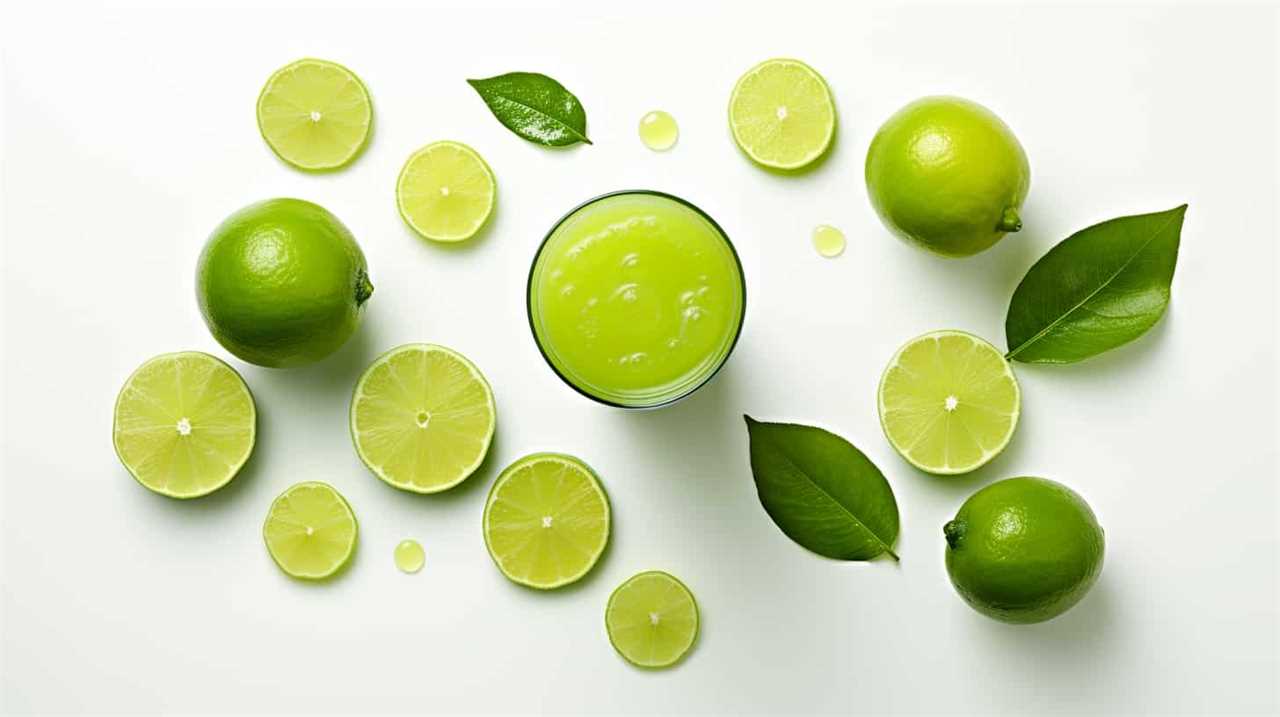
Key Takeaways
- Choose a reputable brand of aloe vera juice that prioritizes quality and uses organic, pure aloe vera.
- Avoid brands that contain added sugars or artificial ingredients.
- Use natural sweeteners like honey, agave syrup, or stevia to enhance the taste of aloe vera juice.
- Experiment with adding fruits, herbs, and other juices to create unique flavor combinations and enhance the health benefits of aloe vera juice.
Choosing the Right Aloe Vera Juice
We can enhance our experience with aloe vera juice by selecting the right brand and type for our preferences. When it comes to finding a reputable brand, it’s important to do some research and read reviews from other consumers. Look for brands that prioritize quality and use organic, pure aloe vera without any added sugars or artificial ingredients. Understanding the health benefits of aloe vera juice is also crucial in making the right choice. Aloe vera is known for its soothing properties, aiding digestion, promoting skin health, and boosting the immune system. By choosing a high-quality brand, we can ensure that we’re getting the maximum benefits from our aloe vera juice.
Now that we know how to choose the right brand, let’s move on to the next step of adding natural sweeteners.
Adding Natural Sweeteners
To enhance the flavor of our aloe vera juice, we can add natural sweeteners such as honey or agave syrup. Using alternative sweeteners not only adds sweetness but also brings unique flavors to the juice. Here are some options to consider:
- Stevia: A natural sweetener derived from the Stevia plant, it’s a zero-calorie alternative to sugar.
- Maple Syrup: This natural sweetener adds a rich and earthy flavor to the aloe vera juice.
- Dates: Pureed dates can be used to sweeten the juice while also providing essential nutrients like fiber.
In addition to using alternative sweeteners, we can enhance the flavor of aloe vera juice by adding spices and extracts. Cinnamon, ginger, or vanilla extract can add warmth and depth to the taste. By experimenting with different combinations of these natural sweeteners, spices, and extracts, we can create a flavor profile that suits our preferences.

Now, let’s move on to the next section and learn how to infuse aloe vera juice with fruits and herbs to further enhance its taste.
Infusing With Fruits and Herbs
As we explore ways to make our aloe vera juice taste better, one option to consider is infusing it with fruits and herbs. Creating unique aloe vera blends by adding fruits and herbs not only enhances the flavor but also adds a touch of freshness and complexity to the juice.
Fruits like strawberries, pineapple, or citrus can add a burst of sweetness, while herbs like mint, basil, or ginger can provide a subtle yet refreshing twist. Exploring the benefits of herbal infusions can also be beneficial for our health. For example, adding a few sprigs of lavender can promote relaxation and reduce stress. Additionally, infusing aloe vera juice with rosemary can aid digestion and boost the immune system.
Blending With Other Juices
Let’s try mixing aloe vera juice with different fruit juices to create delicious and refreshing blends. Blending aloe vera juice with other fruits not only enhances its taste but also adds nutritional benefits to your drink. Here are three fruit juices that you can mix with aloe vera juice:

- Orange juice: Combining aloe vera juice with orange juice not only adds a tangy flavor but also boosts your intake of vitamin C, which is essential for a strong immune system.
- Pineapple juice: Mixing aloe vera juice with pineapple juice creates a tropical blend that isn’t only refreshing but also helps in digestion. Pineapple contains bromelain, an enzyme that aids in breaking down proteins and promoting better digestion.
- Watermelon juice: Blending aloe vera juice with watermelon juice creates a hydrating and refreshing combination. Watermelon is rich in water content and contains electrolytes that can help replenish your body’s fluids.
Experimenting With Flavor Combinations
While we can try various flavor combinations with aloe vera juice, it’s important to find the right balance to enhance its taste. Experimenting with different flavors can’t only make the juice more enjoyable but also enhance its health benefits.
Aloe vera juice is known for its numerous health benefits, such as boosting digestion, promoting hydration, and supporting the immune system. By adding complementary flavors, we can create a refreshing summer drink that not only tastes great but also provides a nutritional boost.
Some popular flavor combinations include mixing aloe vera juice with citrus fruits like lemon or orange, adding a splash of coconut water for a tropical twist, or combining it with cucumber and mint for a refreshing and cooling effect.
Don’t be afraid to get creative and find the flavor combination that suits your taste buds best!
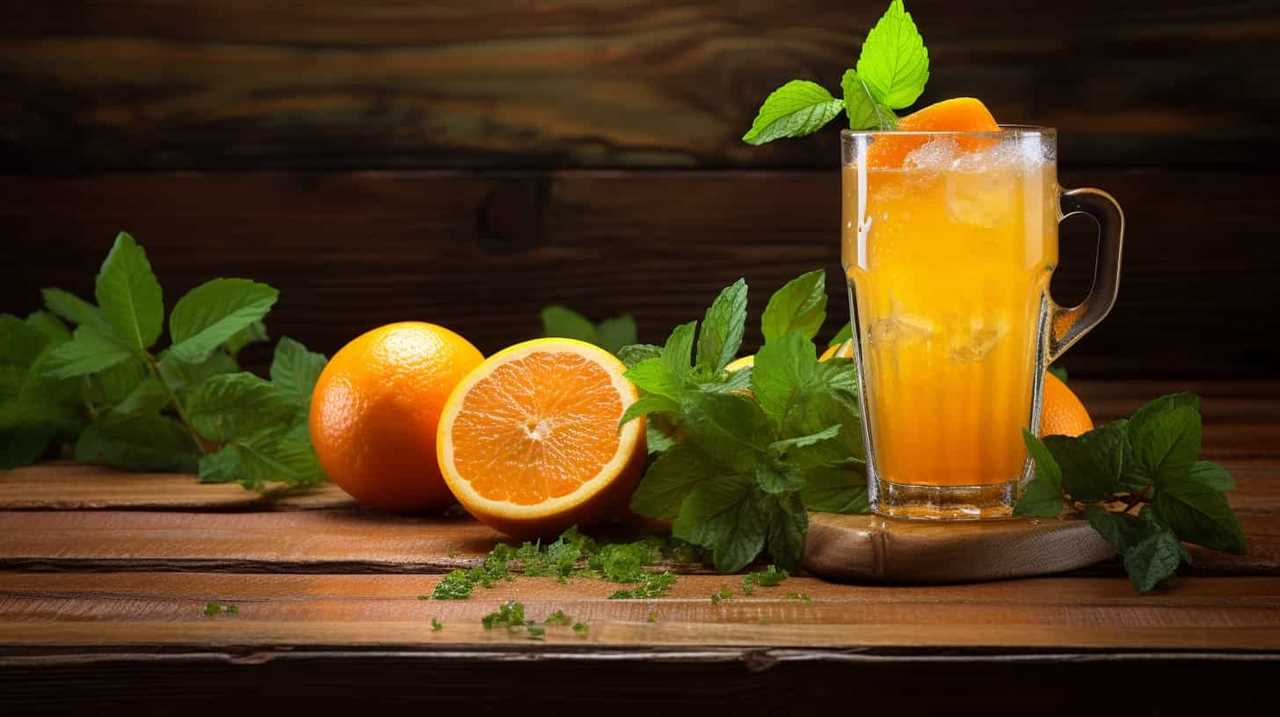
Frequently Asked Questions
Can I Use Store-Bought Aloe Vera Gel Instead of Fresh Aloe Vera for Making Juice?
Yes, you can use store-bought aloe vera gel instead of fresh aloe vera for making juice. However, it’s important to note that fresh aloe vera juice may have more health benefits due to its higher nutrient content.
How Long Can I Store Aloe Vera Juice in the Refrigerator?
Aloe vera juice can be stored in the refrigerator for up to a week. Refrigeration helps maintain the longevity and freshness of the juice, preserving its beneficial properties.
Can Aloe Vera Juice Help With Digestive Issues?
Aloe vera juice can potentially help with digestive issues when taken in appropriate dosages. However, it is important to note that there may be potential side effects. It is always best to consult with a healthcare professional before starting any new supplement regimen.
Can I Use Artificial Sweeteners Instead of Natural Sweeteners in My Aloe Vera Juice?
Using artificial sweeteners in aloe vera juice may affect its taste and potential health benefits. However, natural sweeteners like honey or stevia can enhance the flavor without compromising its nutritional value.

Is It Safe to Drink Aloe Vera Juice Every Day?
Drinking aloe vera juice daily can have numerous benefits, such as improving digestion and boosting the immune system. However, consuming it regularly may also lead to potential side effects like diarrhea or stomach cramps.
Conclusion
In conclusion, making aloe vera juice taste better is easy and enjoyable.
By choosing the right aloe vera juice and adding natural sweeteners, infusing with fruits and herbs, blending with other juices, and experimenting with flavor combinations, you can create a delightful and refreshing drink.
So go ahead and unleash your creativity in the kitchen, and transform your aloe vera juice into a sensational elixir that will transport your taste buds to paradise.
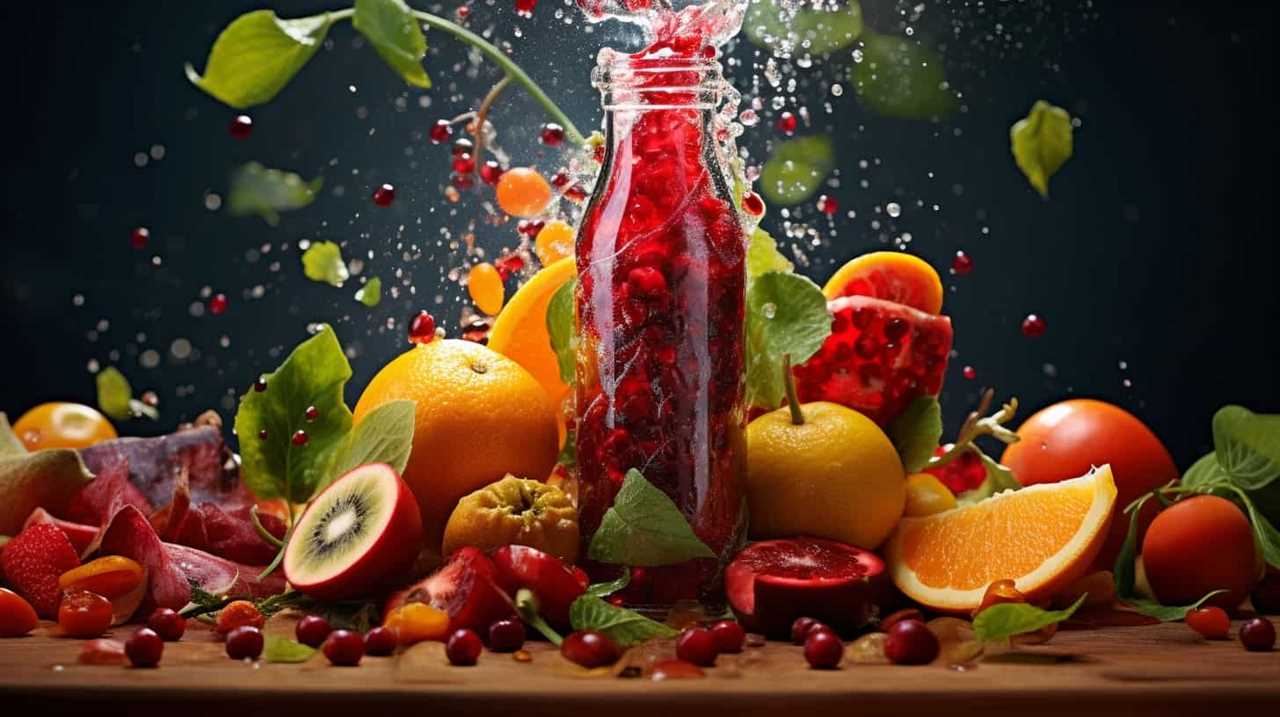
Susannah expertise lies in researching and compiling evidence-based content on juicing, nutrition, and overall health. She is committed to ensuring that The Juicery World offers accurate, up-to-date, and trustworthy information to empower readers to take control of their health. Susannah’s goal is to inspire individuals to embrace juicing as a way to nourish their bodies and live their best lives.
Juice Tips and Tricks
How to Make a Glass of Lemonade With Bottled Lemon Juice

Are you craving a cool glass of lemonade to quench your thirst? Look no further! Try out our perfect recipe using bottled lemon juice that will surely please your taste buds.
In this article, we’ll guide you through the process of creating a tangy and sweet concoction that will leave you feeling refreshed and satisfied.
So grab your ingredients and let’s get started on this delightful journey of serving ourselves and others a glass of pure lemony goodness.
Key Takeaways
- Consider the storage of the bottled lemon juice (dark glass or plastic bottles, protect from light exposure, check expiration date)
- Choose a suitable pitcher and fresh lemons for enhanced flavor
- Store the lemonade concentrate in the refrigerator to maintain freshness
- Adjust the sweetness and tartness to taste with sugar or more lemon juice, and experiment with different sweeteners or additional flavors.
Choosing the Right Bottled Lemon Juice
What are the key factors we should consider when selecting the right bottled lemon juice for our lemonade?

One important factor is how the lemon juice is stored. Look for bottles that are made of dark glass or plastic, as they help protect the juice from light exposure, which can degrade its quality. It’s also important to check the expiration date to ensure freshness.
Another benefit of using bottled lemon juice is convenience. It saves time and effort compared to squeezing fresh lemons. Additionally, bottled lemon juice provides consistent flavor, as the acidity levels are standardized.
When selecting a brand, consider reading reviews and checking for certifications, such as organic or non-GMO.
Gathering the Necessary Ingredients and Tools
How can we gather all the necessary ingredients and tools to make a glass of lemonade with bottled lemon juice?
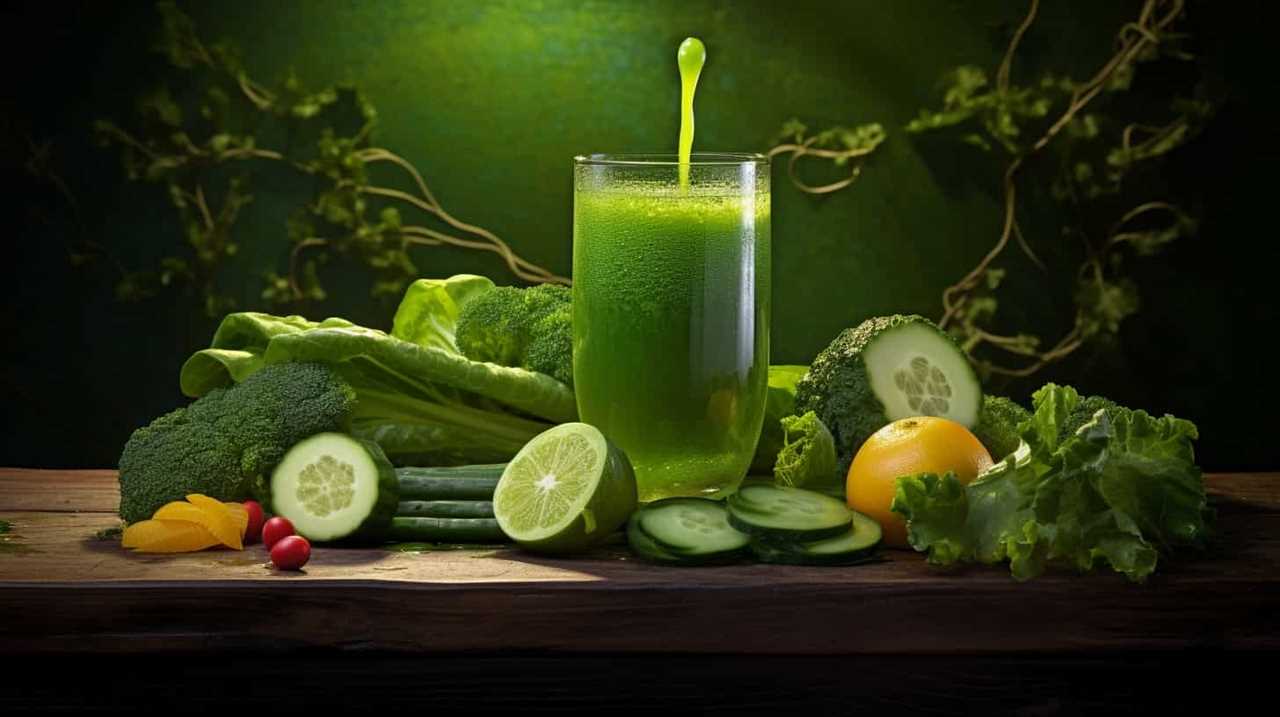
It’s important to start with the right pitcher. Look for a pitcher that’s made of glass or BPA-free plastic, as these materials won’t affect the taste of the lemonade. The pitcher should also have a lid or cover to keep the lemonade fresh and prevent spills.
Now, let’s talk about the lemons. While bottled lemon juice is convenient, using fresh lemons instead can elevate the flavor of your lemonade. Choose lemons that are firm and have a bright yellow color. Give them a gentle squeeze to ensure they’re juicy. To extract the juice, you’ll need a citrus juicer or a reamer. These tools make it easy to get every last drop of juice from the lemons.
Mixing the Lemonade Concentrate
To start mixing the lemonade concentrate, we’ll slowly pour the bottled lemon juice into the pitcher. It’s important to choose the right container for the lemonade concentrate. A pitcher with a lid or a tightly sealed container will help maintain the freshness and prevent any spills or leaks. Once the lemon juice is in the pitcher, we can move on to the next step of adding water and sweetener.
To ensure the lemonade concentrate stays fresh, it’s essential to store it properly. Keep the pitcher in the refrigerator to maintain its cool temperature and prevent any bacteria growth. If you have any leftover concentrate, transfer it to a smaller container with an airtight lid before refrigerating. This will help retain its flavor and prevent any contamination.
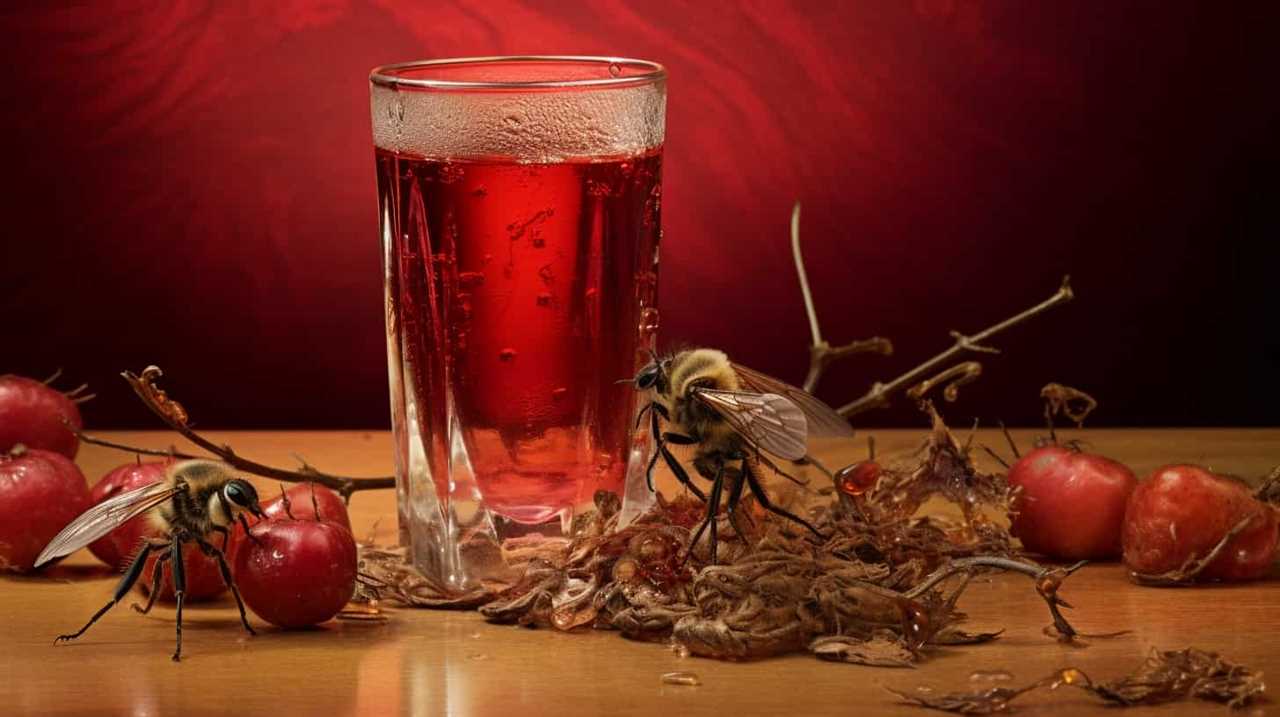
Now that we’ve mixed the lemonade concentrate, it’s time to adjust the sweetness and tartness to taste.
Adjusting the Sweetness and Tartness to Taste
We can adjust the sweetness and tartness of the lemonade to taste by adding more sugar or lemon juice, respectively. If you prefer a sweeter lemonade, simply add more sugar and stir until it dissolves completely. You can experiment with different sweeteners such as honey or agave syrup to find the perfect balance of sweetness.
On the other hand, if you want a tangier lemonade, add more lemon juice gradually, tasting as you go until it reaches your desired level of tartness.
Additionally, you can get creative with your lemonade by adding flavors like fresh mint leaves or a hint of lavender. These additions can elevate the flavor profile and create a more refreshing and unique experience.

Now that we’ve adjusted the sweetness and tartness of our lemonade, let’s move on to serving and enjoying your refreshing glass of lemonade.
Serving and Enjoying Your Refreshing Glass of Lemonade
Now let’s sit back, relax, and savor our refreshing glass of lemonade.
When it comes to serving and enjoying this delightful drink, there are a few techniques and garnishing options to consider.
Firstly, serving your lemonade chilled is essential for maximum enjoyment. Ensure that you have chilled glasses or add ice cubes to the glasses before pouring the lemonade.

To add a touch of elegance, you can garnish your lemonade with a slice of lemon on the rim of the glass. For an extra burst of flavor, you could also add a sprig of fresh mint or a few berries.
Remember to gently stir the lemonade before serving to evenly distribute the flavors.
Now, take a sip, feel the refreshing tang of lemon, and let the sweet and tart flavors dance on your taste buds.
Cheers!
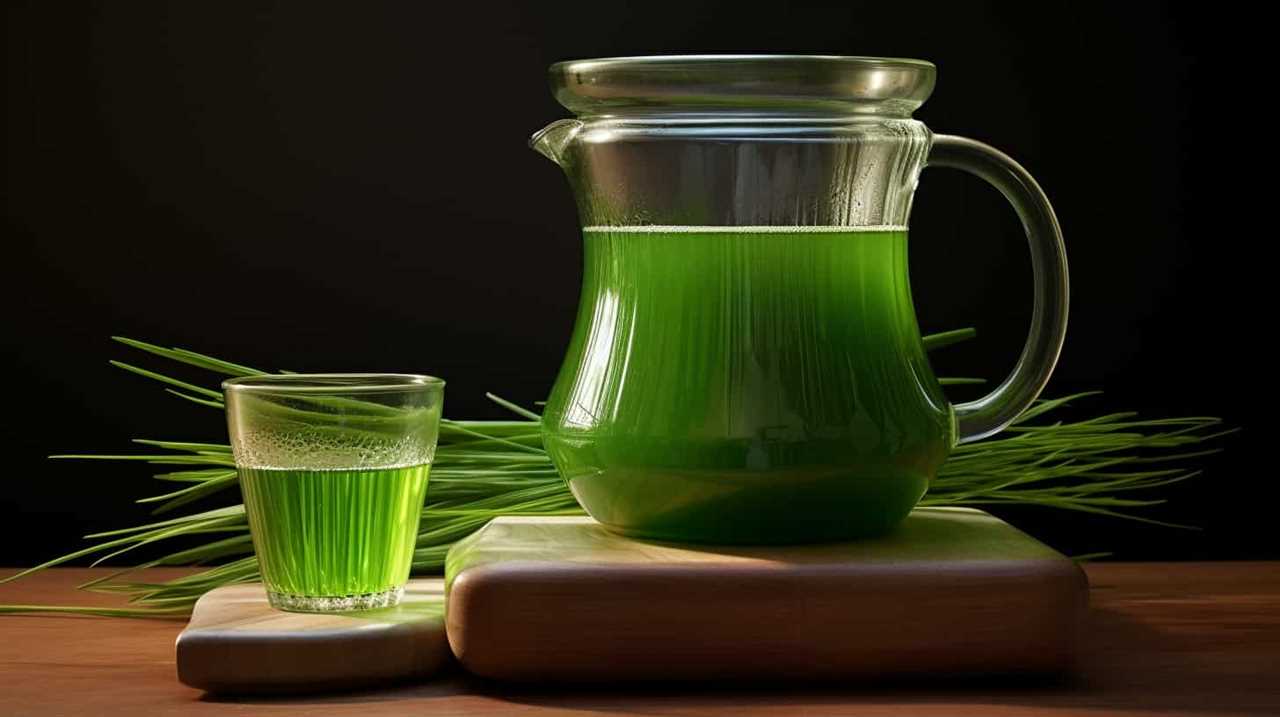
Frequently Asked Questions
Can I Use Fresh Lemons Instead of Bottled Lemon Juice?
Fresh lemons offer numerous benefits over bottled lemon juice. The taste of fresh lemons is unparalleled, providing a vibrant and tangy flavor. Incorporating fresh lemons into your lemonade will elevate its taste and give it a refreshing and authentic twist.
Can I Substitute Sugar With a Different Sweetener?
Substituting sweeteners in lemonade can enhance the flavor and offer health benefits. We’re knowledgeable about alternative sweeteners and can provide precise, detailed instructions on using them in place of sugar.
How Long Does the Lemonade Concentrate Need to Chill in the Refrigerator?
The chilling time for the lemonade concentrate in the refrigerator is typically around 1-2 hours. Using bottled lemon juice offers the benefit of convenience and consistent flavor for a refreshing glass of lemonade.
Can I Add Other Fruits or Flavors to the Lemonade?
Sure, we can definitely add different fruits or flavors to our lemonade. It’s a great way to experiment with unique flavors and create refreshing, personalized drinks. The possibilities are endless!

How Long Does the Lemonade Stay Fresh in the Refrigerator?
Lemonade made with bottled lemon juice can stay fresh in the refrigerator for about 5-7 days. To maximize shelf life, store it in an airtight container and keep it chilled.
Conclusion
And so, with a few simple steps and the right ingredients, a glass of refreshing lemonade is born.
Like a symphony of flavors dancing on your taste buds, this tangy elixir quenches thirst and brings joy on a hot summer day.
Just a sip transports you to a world of citrusy delight, where the sweetness and tartness blend harmoniously.

So go ahead, indulge in the art of lemonade-making and savor every drop of this sun-kissed nectar.
Cheers to the perfect glass of lemonade!
Susannah expertise lies in researching and compiling evidence-based content on juicing, nutrition, and overall health. She is committed to ensuring that The Juicery World offers accurate, up-to-date, and trustworthy information to empower readers to take control of their health. Susannah’s goal is to inspire individuals to embrace juicing as a way to nourish their bodies and live their best lives.
Juice Tips and Tricks
How to Know if Orange Juice Is Bad

We’ve all been in that situation before – reaching for a glass of orange juice and hesitating, unsure if it’s still okay to drink. Fear not! This article will give you the knowledge you need to determine for sure if your orange juice is still fresh or if it’s gone bad.
With a blend of scientific precision and practical tips, we’ll explore color changes, strange smells, off taste, texture changes, and mold or growth that may indicate spoilage.
Let’s dive in and serve ourselves a refreshing glass of certainty!
Key Takeaways
- Color changes in orange juice can indicate a loss of freshness and shelf life extension, but it doesn’t necessarily mean the juice is bad.
- Unusual or off-putting odors in orange juice, such as sour or fermented scents, can be a sign of poor quality.
- An off taste in orange juice, such as sour, bitter, or fermented flavors, suggests that the juice is spoiled.
- Texture changes in orange juice, such as pulp separation or a thicker consistency, can occur as the juice ages, so it’s important to consume it before the expiration date.
Color Changes in Orange Juice
We should be aware that color changes can indicate whether orange juice is bad.

When it comes to orange juice, color is a crucial factor to consider. As oranges are exposed to air, an oxidation process occurs, which leads to changes in color. Fresh orange juice has a vibrant orange hue, indicating its freshness and high nutritional value.
However, as time passes, the juice may undergo a color change, turning dull or brownish. This change in color is a result of the oxidation process, which affects the flavor and quality of the juice. It’s important to note that while a change in color doesn’t necessarily mean the juice is bad, it does indicate that the juice is losing its freshness and shelf life extension.
Therefore, it’s advisable to consume orange juice when it’s at its freshest, as indicated by its vibrant orange color.
Strange Smells in Orange Juice
When it comes to evaluating orange juice, we should be cautious of any strange smells or odors. A fresh, pleasant smell is indicative of good quality orange juice. However, if you notice any unusual or off-putting odors, it may be a sign that the juice has gone bad. These smells can range from a sour or fermented scent to a rancid or moldy aroma.

It’s important to note that while some natural variations in scent can occur due to the specific variety of oranges used, any strong or unpleasant smells should raise concerns. If you have citrus fruit allergies, it’s especially important to pay attention to the smell of orange juice, as it could indicate the presence of spoilage or contamination.
Ensuring the quality of orange juice is essential as it’s a popular beverage known for its health benefits, including being rich in vitamin C and antioxidants.
Off Taste of Orange Juice
Our taste buds can detect even the slightest hint of an off taste in orange juice, which can indicate that it has gone bad. The taste of orange juice should be fresh, tangy, and slightly sweet. If it tastes sour, bitter, or fermented, it’s likely spoiled.
One common cause of an off taste in orange juice is the use of overripe oranges. When oranges become overripe, their flavor profile changes, resulting in a less pleasant taste. Another factor to consider is the expiration date. Orange juice that has passed its expiration date is more likely to develop an off taste. It’s important to check the expiration date before consuming orange juice to ensure its freshness and quality.
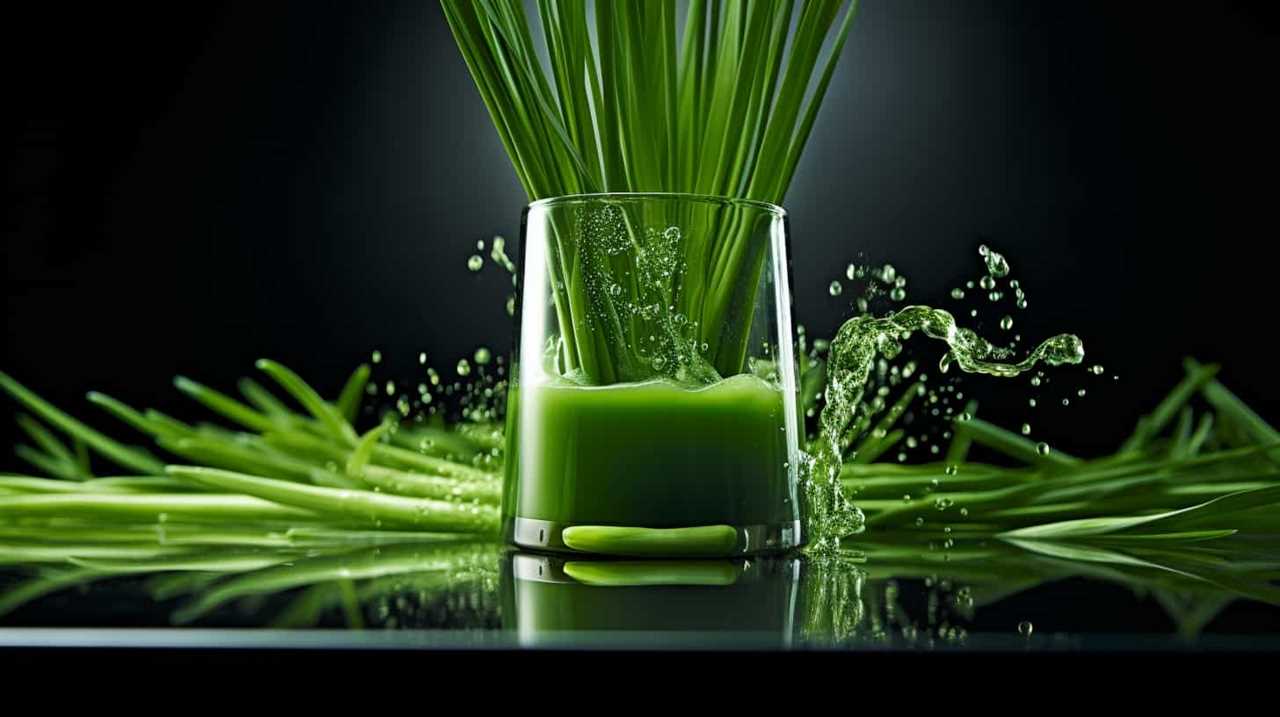
Now, let’s move on to discuss the texture changes in orange juice.
Texture Changes in Orange Juice
As we explore the texture changes in orange juice, it’s important to note that certain factors can cause it to become thicker or develop sediment. One common texture change in orange juice is pulp separation, where the pulp separates from the liquid and settles at the bottom. This can occur naturally over time, as the pulp particles become denser and sink.
Another factor that can affect the texture of orange juice is the expiration date. As orange juice ages, it may start to develop a thicker consistency and even form sediment. This is a result of the natural breakdown of the juice’s components. Therefore, it’s crucial to check the expiration date on orange juice and consume it before it reaches its expiration date to avoid any undesirable texture changes.
Mold or Growth in Orange Juice
We need to be aware of the possibility of mold or other growth occurring in orange juice. Mold can develop in orange juice if it isn’t stored properly or if it has passed its expiration date.
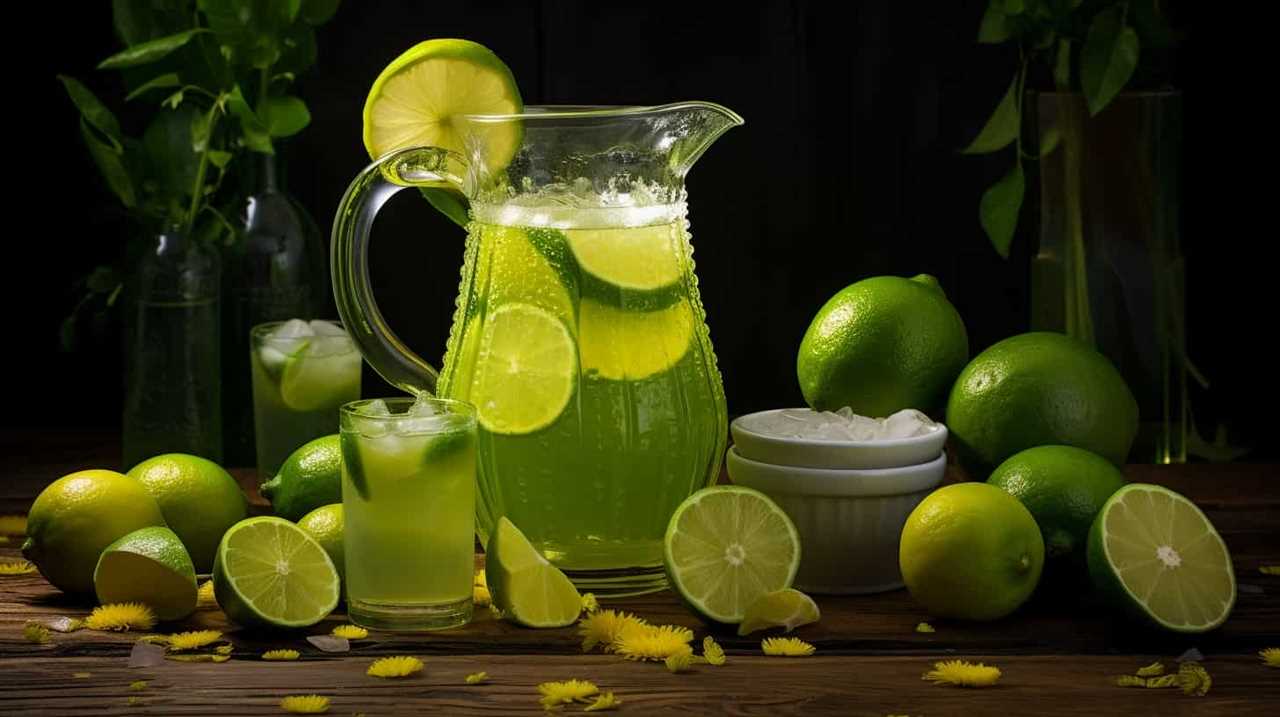
To prevent mold growth, it’s important to follow these steps:
- Store orange juice in the refrigerator at a temperature below 40°F (4°C).
- Check the expiration date on the bottle before consuming. Discard any orange juice that has expired.
- Keep the container tightly sealed to prevent air and moisture from entering, as these can promote mold growth.
Regularly inspecting orange juice for any signs of mold or unusual growth is essential. If you notice any discoloration, a strange odor, or visible mold, it’s best to discard the juice to avoid any potential health risks.
Frequently Asked Questions
Can Orange Juice Go Bad if It’s Stored in the Freezer for Too Long?
Frozen orange juice can potentially lose its nutrients and change its taste if stored in the freezer for too long. It is important to check for signs of spoilage before consuming it.
How Long Can Orange Juice Stay Fresh in the Refrigerator Once It’s Opened?
Once opened, orange juice can stay fresh in the refrigerator for about 7-10 days. To maintain its freshness, store it properly by keeping it tightly sealed and at a consistently cold temperature.
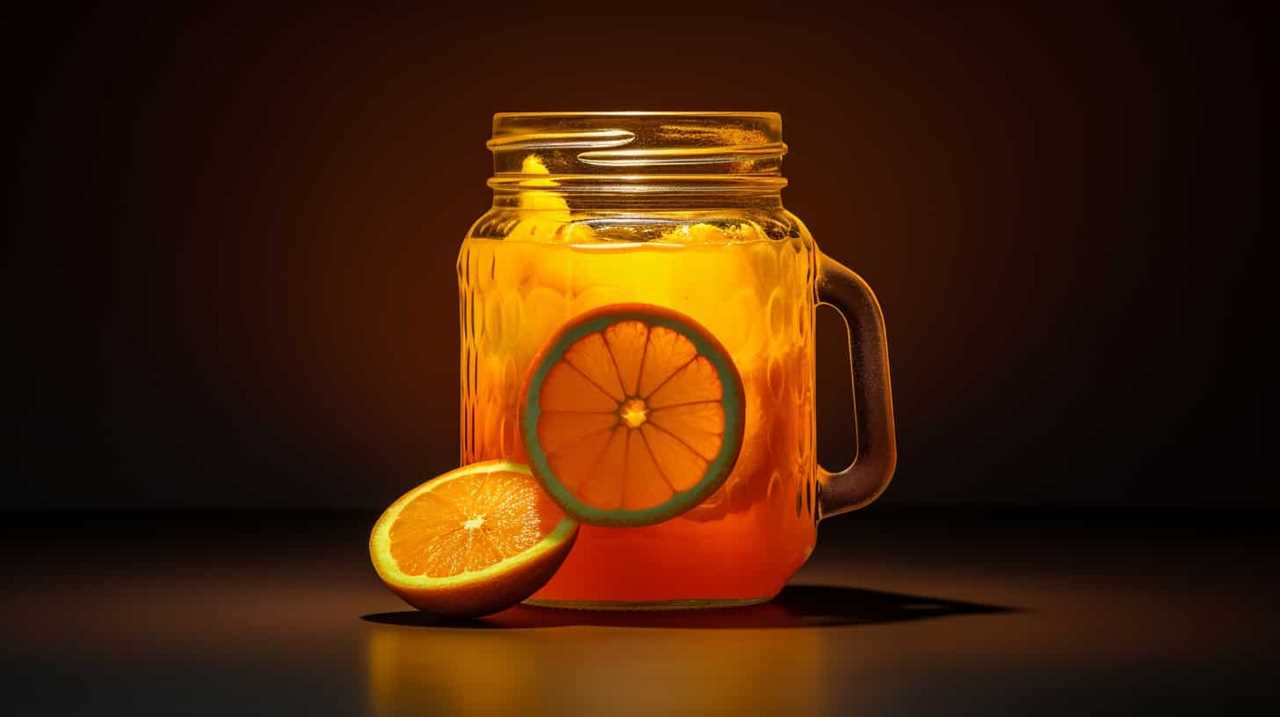
Is It Safe to Consume Orange Juice That Has Been Left Out at Room Temperature Overnight?
Left out orange juice may not be safe to drink as it can harbor harmful bacteria. Signs of spoiled orange juice include a sour smell, mold growth, and a change in color or taste.
Can Orange Juice Develop Harmful Bacteria if It’s Past Its Expiration Date but Still Looks and Smells Fine?
Orange juice can cause food poisoning if it develops harmful bacteria, even if it looks and smells fine. Signs of spoiled orange juice include a sour smell, mold growth, and a change in color or taste.
Does the Nutritional Value of Orange Juice Decrease as It Starts to Go Bad?
As orange juice goes bad, its nutritional value decreases. The longer it sits on the shelf, the more nutrients it loses. Signs of spoilage include a sour smell, off taste, and mold growth.
Conclusion
In conclusion, determining if orange juice is bad requires careful observation of color changes, strange smells, off taste, and texture changes. Just like a detective investigating a case, we must rely on our senses to detect any signs of spoilage.
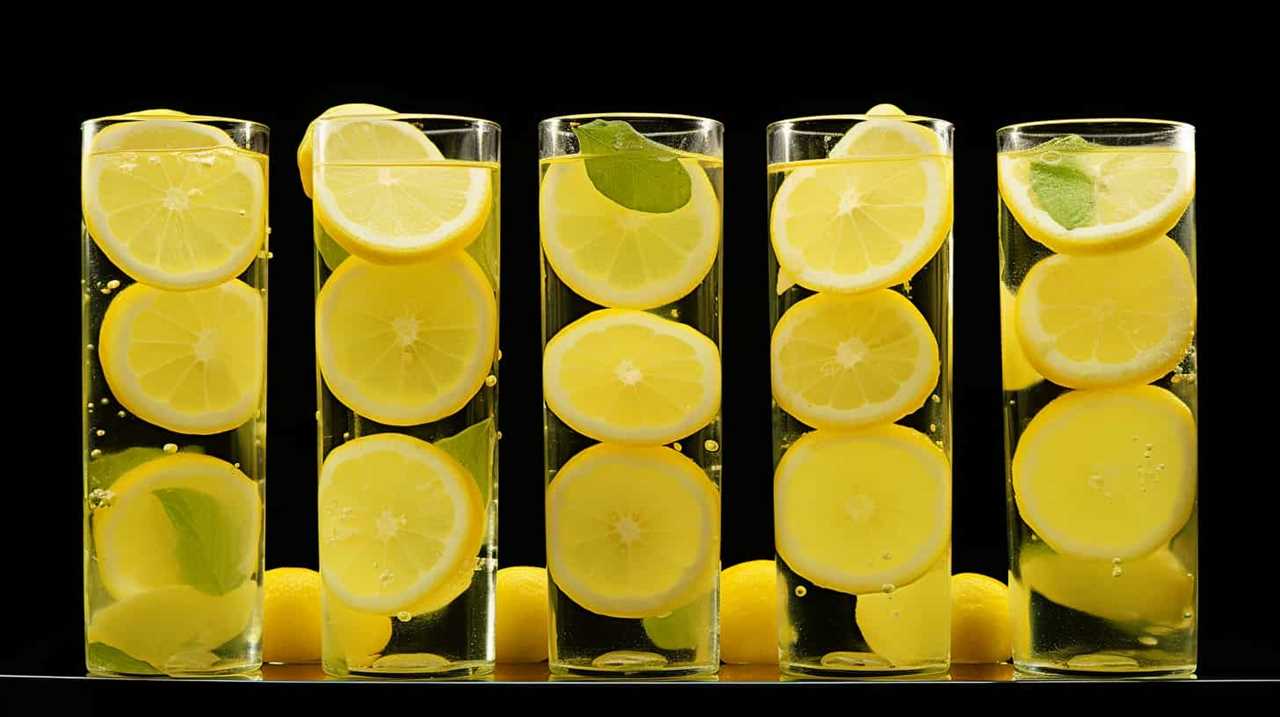
If we detect mold or growth in the orange juice, it’s a clear indication that it’s no longer safe to consume. By remaining vigilant and attuned to these indicators, we can ensure that our orange juice is always fresh and enjoyable.
Susannah expertise lies in researching and compiling evidence-based content on juicing, nutrition, and overall health. She is committed to ensuring that The Juicery World offers accurate, up-to-date, and trustworthy information to empower readers to take control of their health. Susannah’s goal is to inspire individuals to embrace juicing as a way to nourish their bodies and live their best lives.
-

 Juice Tips and Tricks3 months ago
Juice Tips and Tricks3 months agoHow Much Lemon Juice Is Equal To Half A Lemon
-

 Juice Tips and Tricks3 months ago
Juice Tips and Tricks3 months agoHow Much Lemon Juice Concentrate Equals One Lemon
-

 Juice Tips and Tricks3 months ago
Juice Tips and Tricks3 months agoHow Long Can You Drink Orange Juice After The Expiration Date
-

 Fruit Juice Varieties2 months ago
Fruit Juice Varieties2 months agoTop 11 Most Loved Fruit Juice Varieties
-

 Juice Tips and Tricks3 months ago
Juice Tips and Tricks3 months agoHow Much Lemon Juice Is Equivalent To 1 Lemon
-

 Organic and Natural Juices2 months ago
Organic and Natural Juices2 months ago8 Best Organic Brands for Fruit Juice
-

 Juice Tips and Tricks3 months ago
Juice Tips and Tricks3 months agoHow Much Lemon Juice Is Equivalent To One Lemon
-

 Juice Tips and Tricks3 months ago
Juice Tips and Tricks3 months agoHow Long Do You Need To Drink Pineapple Juice Before Oral



